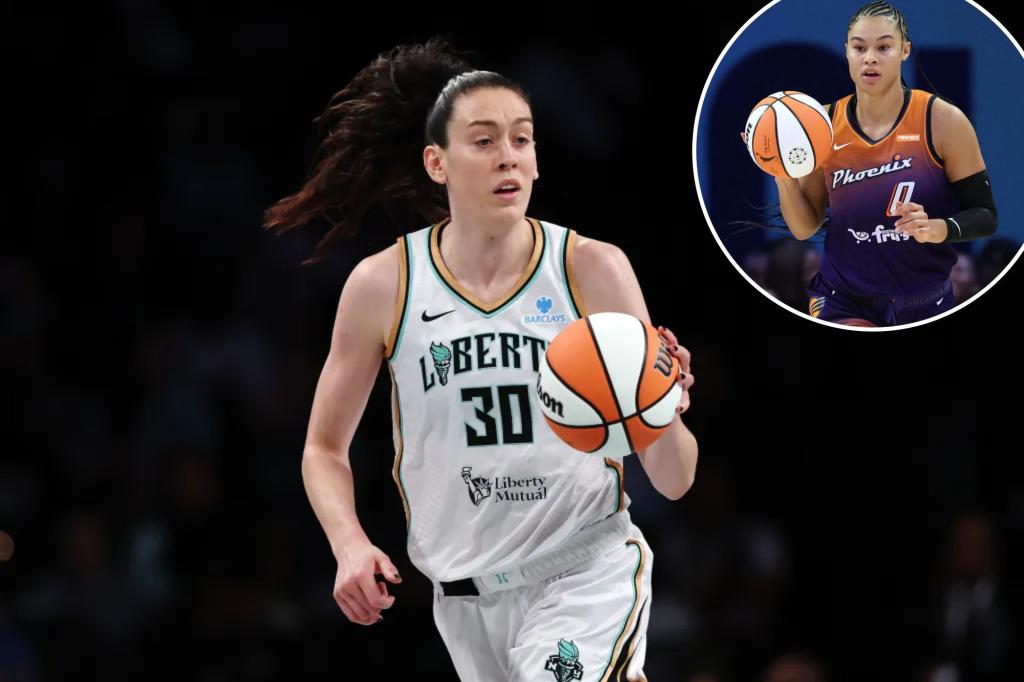The Women’s National Basketball Association (WNBA) is on the cusp of transformative change as labor talks intensify between the Women’s National Basketball Players Association (WNBPA) and the league. Breanna Stewart, WNBPA vice president, recently highlighted the significant disparities in initial proposals, setting the stage for what she anticipates will be a ‘spicy’ negotiation period. With the current collective bargaining agreement (CBA) set to expire, the stakes are high, and the players are determined to secure a deal that reflects their increasing value and the league’s burgeoning success.
As the WNBA experiences a surge in popularity, driven by rising TV viewership, increased attendance, and substantial media rights deals, players are seeking to share more equitably in the league’s financial growth. One prominent figure in these discussions is Nneka Ogwumike, president of the WNBPA, whose insights and leadership are pivotal in shaping the players’ demands. This article delves into the key issues at stake, the challenges both sides face, and the potential implications for the future of the WNBA.
Divergent Initial Proposals
Breanna Stewart’s remarks underscore the considerable gap between the players’ initial proposals and the league’s response. According to Stewart, the WNBA’s counteroffer was ‘pretty polar opposite’ to what the WNBPA had put forth. This divergence suggests fundamental differences in how each party views the players’ roles and contributions to the league’s economic success.
The WNBPA’s proposals reportedly focus on revenue sharing, increased salaries, expanded rosters, and a more significant voice in media rights negotiations. The league’s initial reluctance to meet these demands head-on prompted Mercury star Satou Sabally to describe the response as a ‘slap in the face,’ highlighting the players’ frustration and determination to push for meaningful change.
The Ogwumike Factor: A Player-Centric Approach
Nneka Ogwumike’s leadership as president of the WNBPA has been instrumental in shaping the players’ approach to these negotiations. Ogwumike has emphasized the players’ deep understanding of the business side of the WNBA, challenging perceptions that they are not fully aware of the league’s financial dynamics. Her focus on detail and commitment to a ‘fair’ bid reflect a player-centric approach that aims to benefit both current and future generations of WNBA athletes.
‘It’s been made clear that this perception that the players don’t understand the business,’ Ogwumike told reporters. ‘[WNBA commissioner Cathy Engelbert] told me that to my face myself.’
Ogwumike’s determination to ensure players have a growing portion of the revenue share signals a broader movement towards recognizing athletes’ value in driving the league’s success.
Critical Issues at Stake
Several critical issues are central to the ongoing negotiations. Revenue sharing remains a primary concern, with players seeking a more equitable distribution of the league’s growing revenues. Increased salaries are also a key demand, reflecting the players’ desire for compensation that aligns with their skill, dedication, and the economic impact they generate.
Expanded rosters are another crucial point, as larger teams would provide more opportunities for players and potentially reduce the physical strain on existing athletes. Finally, having a seat at the table for media rights negotiations would empower players to influence the future of the league’s broadcasting and digital strategies.
WNBA’s Explosive Growth and Financial Landscape
The WNBA’s recent financial milestones underscore the urgency and importance of these labor talks. The league’s 11-year media rights deal, valued at $2.2 billion, is a testament to its increasing popularity and market value. Moreover, the WNBA’s expansion to 18 franchises by 2030, with new teams in Cleveland, Detroit, and Philadelphia reportedly paying $250 million expansion fees, further highlights the league’s economic potential.
These developments create a unique backdrop for negotiations, as players seek to capitalize on the league’s success and secure a more substantial share of the financial pie. The players opted out of the current CBA last October, providing both sides with a year to reach a new agreement that addresses the players’ needs and aspirations.
Negotiation Challenges and Potential Outcomes
Despite the progress made, significant challenges remain in reaching a new CBA. With limited time left before the current agreement expires, both sides face pressure to bridge the gap between their initial proposals. Stewart’s anticipation of a ‘spicy’ meeting during All-Star weekend reflects the intensity and stakes involved.
One potential outcome is a successful negotiation that results in a mutually beneficial CBA. Such an agreement would provide players with increased compensation, greater influence, and more opportunities, while ensuring the league’s continued growth and stability. Another outcome could be a work stoppage if the two sides fail to reach an agreement, potentially disrupting the season and damaging the league’s reputation.
Conclusion: Charting the Future of the WNBA
The ongoing labor talks between the WNBPA and the WNBA represent a pivotal moment in the league’s history. Breanna Stewart’s anticipation of ‘spicy’ negotiations highlights the significance of the discussions, as players seek to secure a deal that reflects their increasing value and contributions to the league’s success. With key issues such as revenue sharing, increased salaries, and expanded rosters at stake, the outcome of these talks will shape the future of the WNBA.
As Nneka Ogwumike and the WNBPA continue to advocate for the players’ interests, the league faces a critical decision: to embrace a more equitable and collaborative approach that recognizes the athletes’ role in driving the WNBA’s growth, or risk a potential work stoppage that could undermine its progress. The negotiations’ outcome will not only impact the players but also the league’s long-term viability and its position in the broader sports landscape. The coming weeks will be crucial in determining whether both sides can find common ground and forge a path toward a brighter, more sustainable future for the WNBA.

Leave a Reply